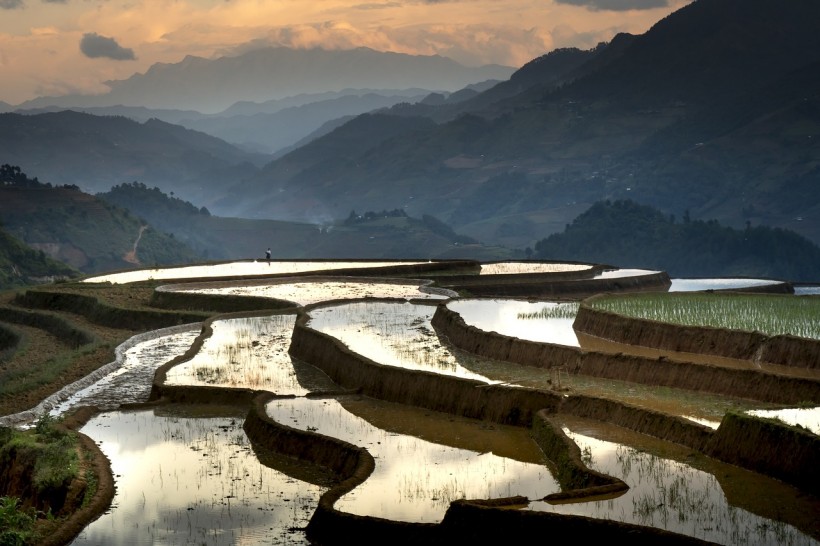Terrace farming is one of the most sophisticated methods in agriculture, spanning hundreds of years since it was developed by a long-lost ancient civilization. Since then, some agricultural countries and even other nations in the world's tropics and subtropics have incorporated them. This traditional and resourceful method involves the growing of crops along the slopes of mountains and hills.
The said agricultural practice also serves as a response to soil erosion, mainly caused by raging floodwaters or runoff. While terrace farming can mitigate or prevent flooding that leads to eventual damage or destruction of the soil, terraces also have reported disadvantages when it comes to cost, manpower, and other environmental repercussions if terrains are not constructed properly.
What is Terrace Farming?

Terrace farming, as mentioned earlier, is the growing of crops on hillsides and mountainsides, but it is done through the construction of a series of flat surfaces that resemble the stairs of a house or other establishments. Also called step farming, the method aims to protect the soil from moving water or water current flow along the slopes.
According to a 2022 report, modern scientific research (consisting of 349 studies between 1991 and 2020) shows that areas suffering from severe soil erosion have confirmed that terrace fields significantly slowed down surface runoff, as cited by the National Institutes of Health (NIH).
Furthermore, terrace cultivation allows farmers to gain more control over the flow of water and against soil erosion to utilize land use. Yet, the scientific report suggests additional or more in-depth studies on terrace farming and its multi-faceted aspects are needed, the NIH says.
Also Read: Ways to Control Erosion At Construction Sites
How Terrace Farming Prevent Soil Erosion?
Although we know that terrace farming prevents soil erosion, there is a specific geological mechanism behind it, most often not evident in the naked eye.
According to Iowa State University, terrace fields specifically limit soil erosion by slowing and reducing the energy of flowing surface water. In other cases, terraces collect drainage water and redirect the flow of water underground, rather than above ground as runoff.
The university explains that soil erosion is a gradual process that transpires when the impact force of flowing water or wind removes soil particles, causing the deterioration of the soil.
Inca Civilization
The Inca people, who were part of the Inca Civilization in South America's mountains, invented and developed terrace farming during their reign from around 1200 to 1553 AD. In modern times, the ancient civilization's most famous terrace field can be found in the Incan citadel called Machu Picchu, which was built at around 1450.
Aside from South America, terrace farming in contemporary times is also practiced in Asia and the Mediterranean where hilly or mountainous landscapes are converted into a successive area of flat plains where crops can grow.
Despite the benefits of terrace cultivation, cold regions of the world such as the Arctic and subarctic are not suitable for terrace farming since relatively low temperatures prevent the growth of some crops.
Related Article: Soil Loss Threatens Food Security
© 2024 NatureWorldNews.com All rights reserved. Do not reproduce without permission.

![Tsunami Hazard Zones: New US Map Shows Places at Risk of Flooding and Tsunamis Amid Rising Sea Levels [NOAA]](https://1471793142.rsc.cdn77.org/data/thumbs/full/70325/280/157/50/40/tsunami-hazard-zones-new-us-map-shows-places-at-risk-of-flooding-and-tsunamis-amid-rising-sea-levels-noaa.jpg)



